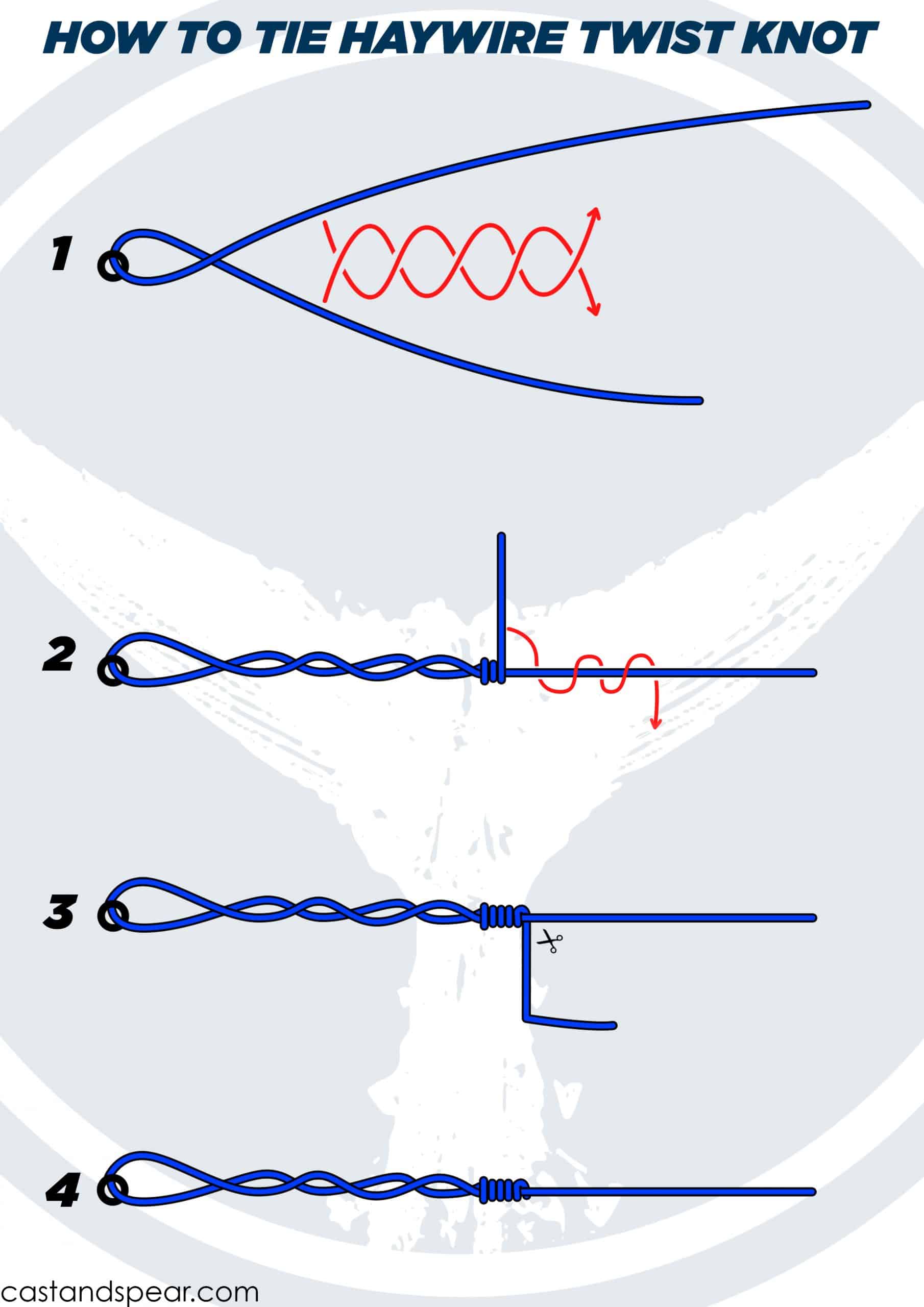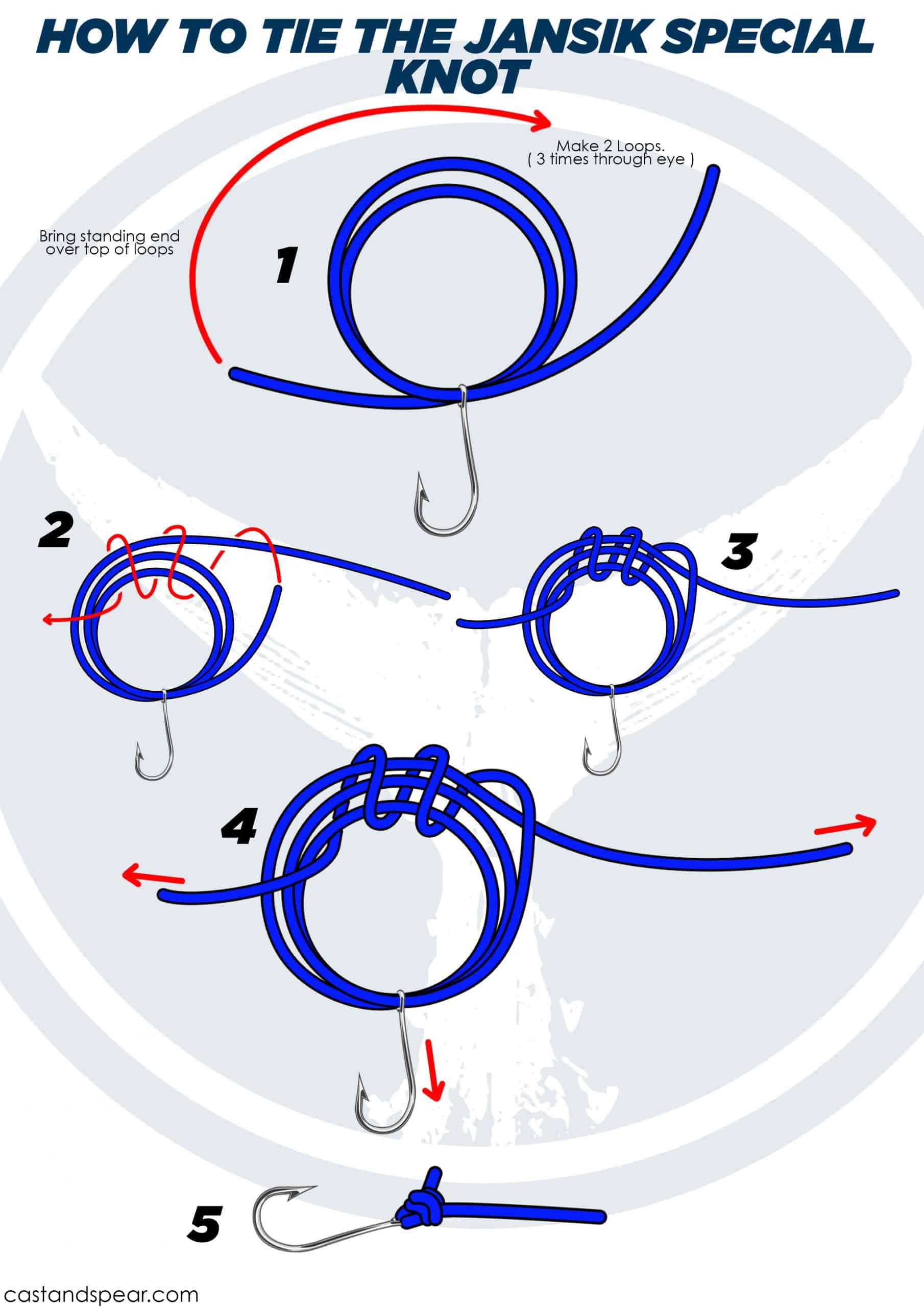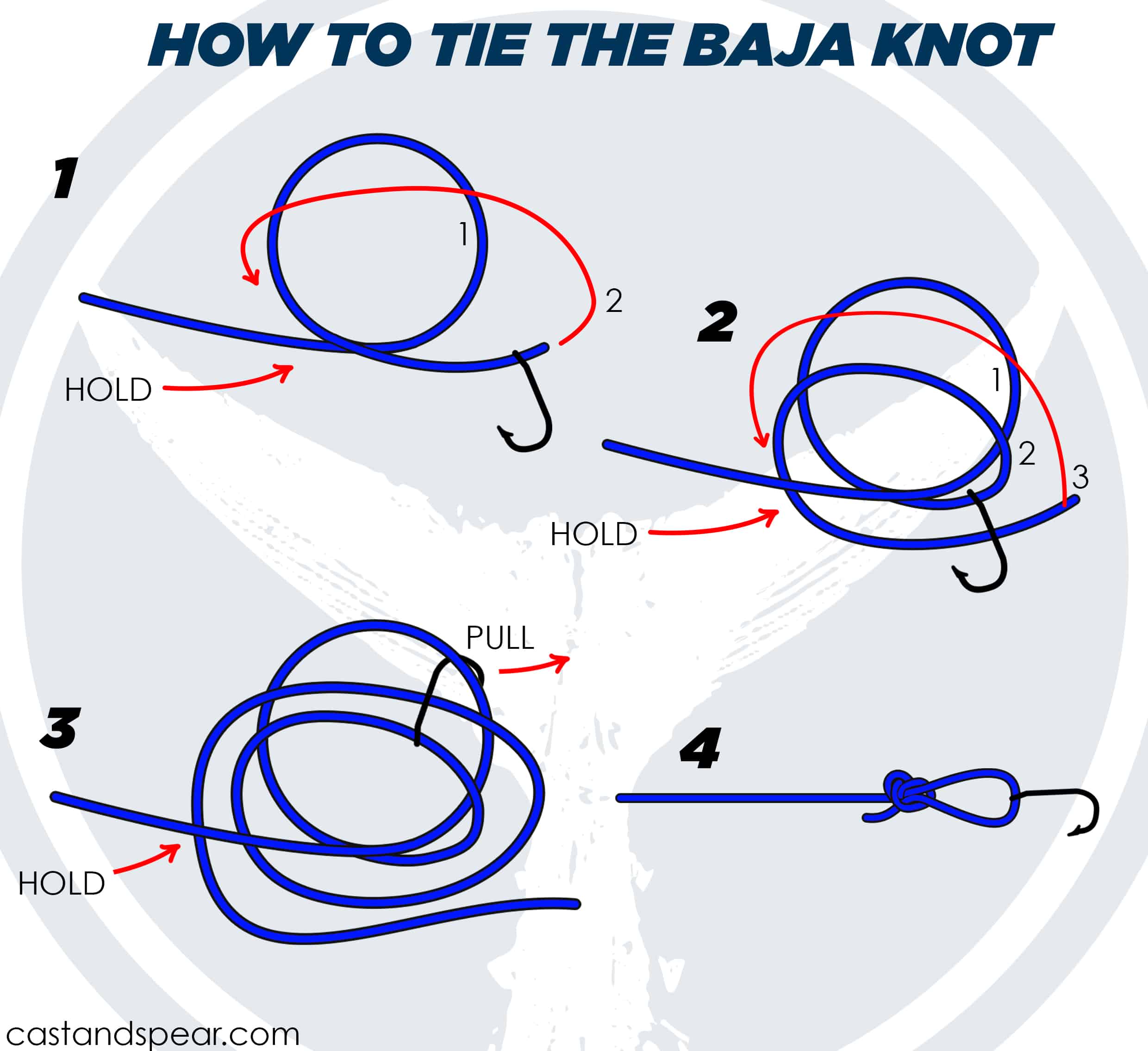The Davy knot is considered to be one of the best knots anglers can use. Attributed to the fly fishing professional Davy Wotton, these knots are quite simple to tie and can be made quickly. In other words, it will allow you to spend more time fishing and less time preparing your gear.
It is also quite small and compact, which makes it ideal for small flies and prevents the wastage of tippet material.
Plus, these knots can strengthen your line by about 85% to 90%.
Tying the Davy Knot
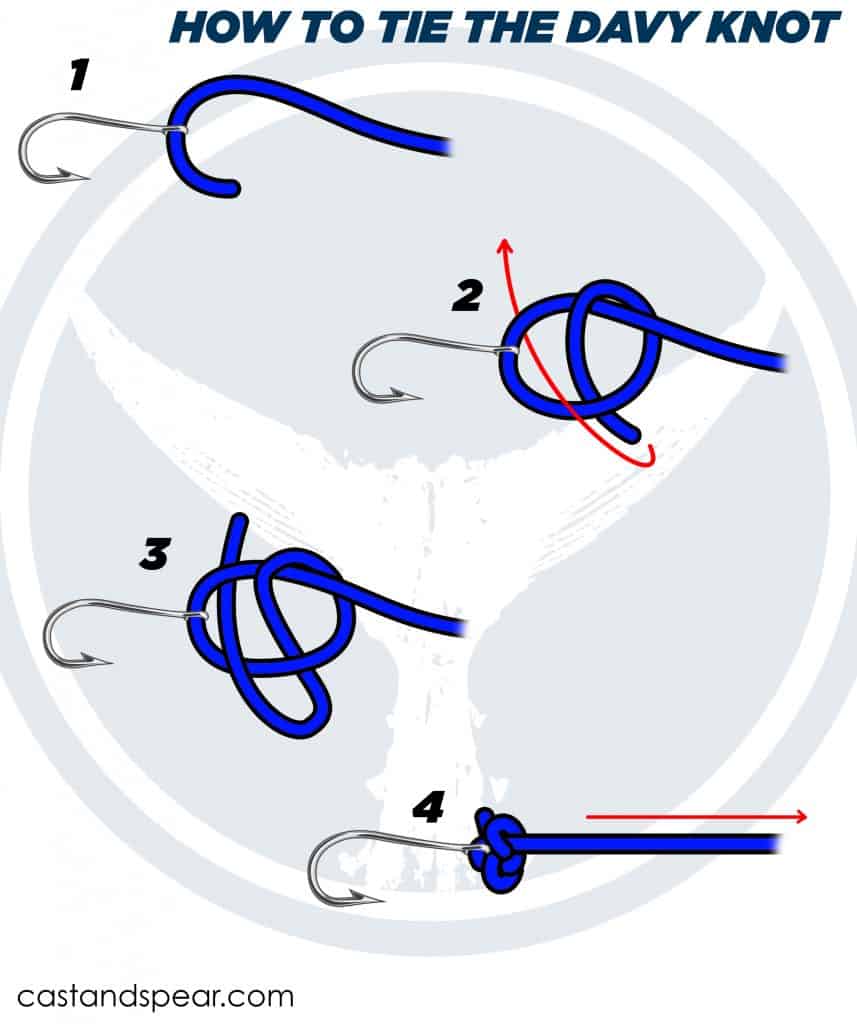
Tying Davy Knots is not difficult once you get the hang of it. Just follow these steps:
- Thread about 3 inches of the leader through the hook eye.
- Loop the tag end through the loop by passing it through the overhand knot and the hook.
- Pull the tag end to draw up and tighten the knot. Do the same on the mainline to make it holdfast.

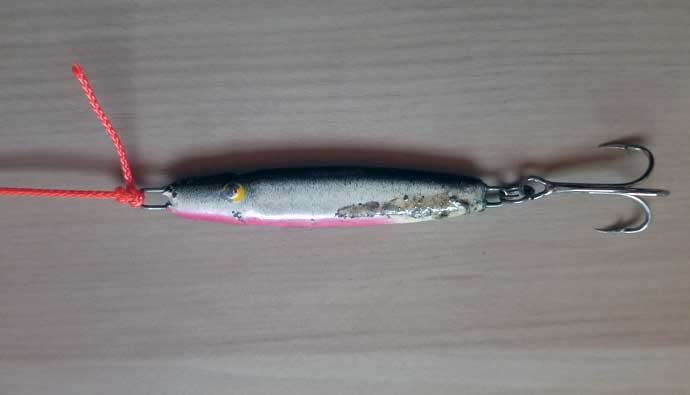
Tips
- One of the main tips you need to keep in mind is that the Davy Whaknot is tiny, so don’t use lubrication to reduce friction.
- If the tag end is too short, use your teeth to tighten the Davy knot, but according to Davy Wotton, you shouldn’t do this after the leader or tippet has been in the water. You can get a nasty infection otherwise.
- Make sure the tag end lies against the eye right under the Davy knot. If it slides toward the center of the eye, it will become weak.
- The knot will not be able to grip well if the tippet is smaller than the wire. Strengthen it by adding one more tuck to create the double Davy knot.
Advantages
- Small and easy to tie.
- It can be tied in less than 15 seconds with practice, even in cold or adverse weather conditions.
- Perfect for people who take part in fly fishing competitions.
- It is powerful compared to other fishing knots.
- It can withstand up to approximately 95% before breaking.
- It will likely never slip out, especially if you add another knot.
Disadvantages
- Not stronger than the Orvis knot.
- Holds poorly in a braided line since this line requires a lot more friction, so it doesn’t slip.
Uses
- The Davy knot is typically used in fly fishing, especially in competitions, because it is simple to tie and can be tied very quickly.
Alternatives
- Double Davy Knot – add another wrap to the Davy knot to make it a double Davy knot. However, you won’t need this knot if you tie the simple one properly.
- Arbor Knot – This knot is perfect for tying a fishing line to a spool and can prevent your rod from going overboard as the fish starts to fight.
- Baja Knot – This knot is commonly used to form a loop at the end of a line and is efficient for making a loop to loop connections.
- Berkley Braided Knot – This knot is ideal for tying terminal tackle with a braided line and is perfect for super-smooth lines. It can be tied almost like the San Diego jam knot on braided lines. The Berkley braid knot with its double line, makes it more secure.
Frequently Asked Questions
Q: How strong is the Davy knot?
A: The Davy knot ranges from 80 to 100% in strength. It’s considered less versatile than the Orvis knot because it cannot be used on a braided line.
Q: What is the weakest fly fishing knot?
A: Most anglers consider the clove hitch as the weakest fly fishing knot. It is also easy to tie.
Q: How do I loosen a stubborn knot?
A: To weaken a strong knot, roll it with your palm against a hard and flat surface. If that doesn’t work, soak the knot in water first.
Q: How do I make a knot stronger?
A: To make a knot hold fast, soak it before tying it and allow it to dry.
Q: What is the best fishing knot for monofilament?
A: The Palomar fishing knot is considered to be the best for monofilament or leader.
Q: Is a double knot stronger than a single knot?
A: Adding an additional knot to a simple one usually makes it stronger, especially if it is lubricated. However, moisten it only if you are using a braided line.
Q: How can I tie a hook to a fishing line?
A: Slip your line through the hook eye and pull 5 inches through. Then pass the tag or free end through the hole above the hook and lubricate the twisted line. Then pull the tag end and the line running through the hook tight. Cut off the excess line, and you are done.
Q: Should the leader be weaker or stronger than the mainline?
A: A leader has to be stronger as well as thicker than the mainline, but the length should vary according to the type of fishing. For instance, if you are using lures, you should go for a shorter one so you can cast far.
Q: Why is a leader used during fishing?
A: The leader protects the line from abrasions, such as against sharp rocks and reefs. Plus, it reduces the visibility of the line, so the fish don’t see it and swim away to safety.




 Facebook
Facebook YouTube
YouTube